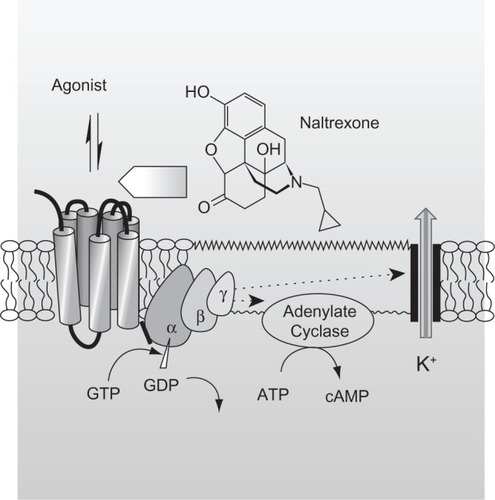Figures & data
Figure 1 Mechanism of action of naltrexone. The reversible interaction of an opioid agonist with opioid receptors, which are part of the seven-transmembrane, G-protein-coupled receptor family, elicits opioid-induced effects, including those desired by abusers. Opioid receptor antagonists such as naltrexone also reversibly bind to opioid receptors, but they lack intrinsic activity and thus do not elicit an opioid-like effect. However, their binding limits the number of unoccupied receptors and, consequently, the magnitude of agonist-induced opioid effects. Naltrexone, 17-(cyclopropylmethyl)-4,5α-epoxy-3,14-dihydroxymorphinan-6-one, is a substituted oxymorphone (the tertiary amine methyl group is replaced with methylcyclopropane) and the N-cyclopropylmethyl derivative of oxymorphone. Naltrexone’s major metabolite, 6-β-naltrexone, is also a competitive antagonist at opioid receptors.

